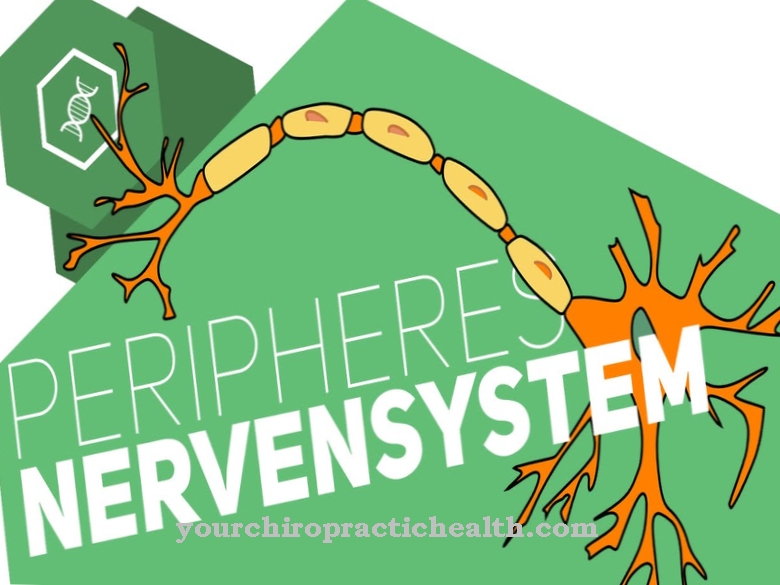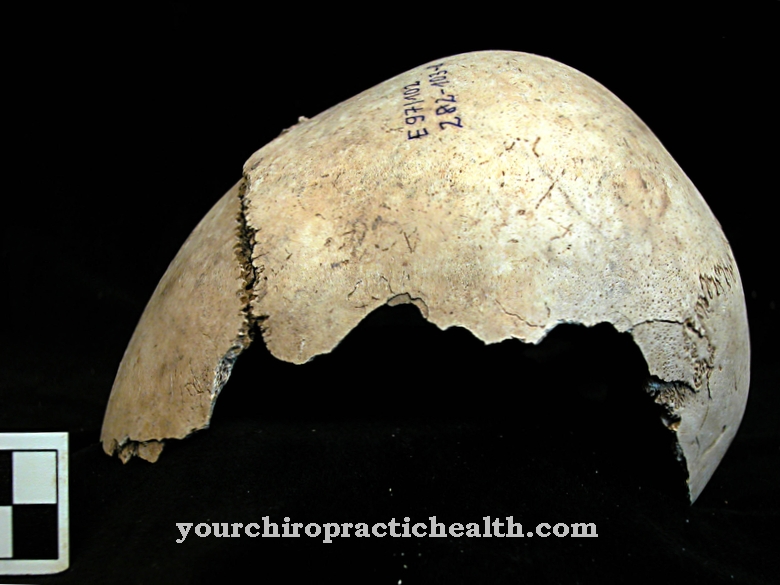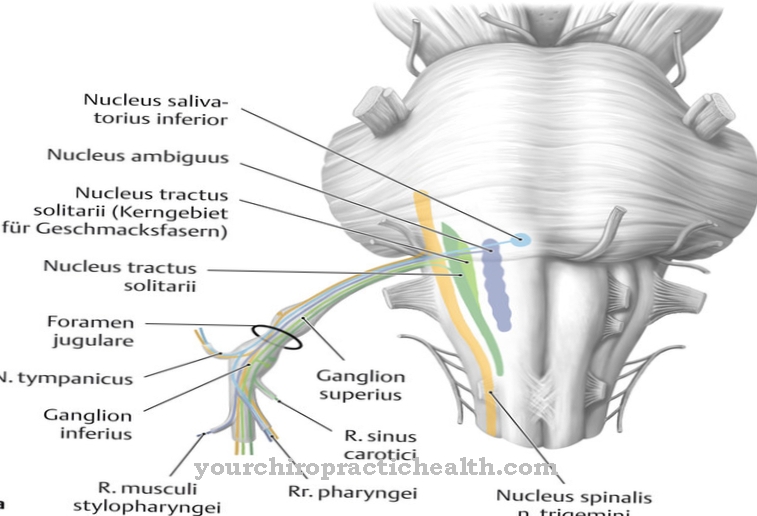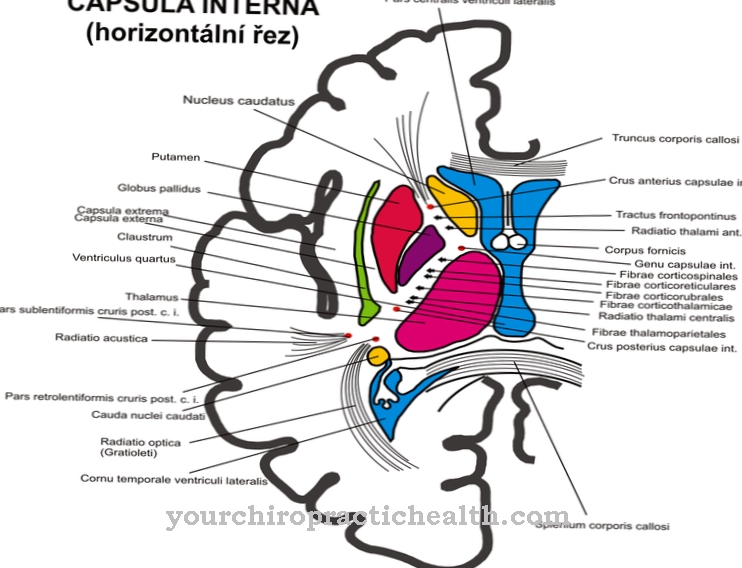The forehead is part of the front head. It starts below the hairline and ends above the eyebrows. It is considered to be meaningful about a person's character.
What is the forehead
As forehead is the part of the head that lies above the eyes and below the hairline. They limit the temples on both sides. The medical term is Frontal region. It protects the frontal lobe of the brain from blows or other influences.
Some idioms are related to the forehead. To stand up to someone is to assert yourself against someone who has a different point of view. If one speaks of a high forehead, the bald head is jokingly pointed out. In a figurative sense, the body part is also called the front of a building by referring to it as the front side.
Anatomy & structure
Anatomically, the forehead consists of the frontal bone (Frontal bone), which acts as bony protection for the brain and therefore especially for the frontal lobe. It is attached to the orbital roof, which is covered by the scalp. The frontal bone also includes the upper part of the eye sockets including the eyebrows, which in humans have a distinct bulge.
The man usually has larger eyebrows than the woman. In the frontal bone itself, there is a cavity called the frontal sinus, which is part of the paranasal sinuses. It is provided with a mucous membrane and occurs twice.
The frontal bone can be divided into three parts:
- The Squama frontalis, also known as the frontal bone scale, is the frontal part of the hairless forehead.
- The Pars orbitalis includes the upper part of the eye sockets. They form a pit in the bone structure on both sides, which act as eye sockets and provide protection for the sensitive organ of vision.
- The Pars nasalis means the upper part of the nasal cavity and thus the access to the airways.
Function & tasks
The task of the frontal bone is to protect the brain and therefore especially the frontal lobe. This is responsible for controlling motor skills and social behavior. He ensures that situations are responded to appropriately.
Like all paranasal sinuses, the frontal sinus has three tasks: It warms the inhaled air, serves as a pneumatization space and as a resonance space for the formation of sounds when speaking. The warming, humidification and pre-cleaning of the breathing air in the cavities in front of the lower airways serve to protect the lungs. Due to their lining with mucous membrane, they are important for defense against infection.
As a pneumatization space, the cavity in the bones ensures that the weight is reduced. When speaking, the nasal cavity becomes important when nasals like the "m" or the "n" are formed. In this case, the soft palate closes the path of air to the oral cavity by lowering so that the nasal cavity can be turned into a resonance space.
Since the forehead is exposed, it is used to regulate the heat balance. With its numerous sweat glands, it provides cooling on hot days. The forehead is also used for communication with the help of facial expressions. Together with the eyebrows, expressive face shapes are possible, which play a major role in the era of silent films or in the theater to this day. On the one hand, facial expressions can underline what has been said and thus make it more believable. If it is in contrast to the words, the speaker makes himself implausible, because the reaction to the physical statement is instinctive.
You can find your medication here
➔ Medicines for headaches and migrainesIllnesses & ailments
Cold sweat on the forehead is not a disease, but as a symptom it can indicate one. In diabetics, for example, it can indicate hypoglycaemia, which must be corrected quickly. If dizziness is added, it can indicate problems with the circulation. In this case it precedes a fit of weakness and should be taken seriously by putting their feet up or at least sitting down. The occurrence should always be clarified with a doctor.
The frontal sinus infection or Frontal sinusitis occurs when the outflow of nasal secretions from the sinuses becomes impossible during a cold. If the irritated mucous membranes swell, they can block the way out. A frontal sinus infection usually manifests itself as a throbbing headache and fever.It is mainly triggered by viruses and less often by a bacterial infection. Inhalations, sprays that make the mucous membrane swell, drinking plenty of fluids and, above all, resting so that the body can counter the inflammation are helpful. In severe cases, antibiotics are also prescribed if the disease is caused by bacteria. It can take up to two weeks for the sinusitis to pass.
The forehead is also one of the places where pimples and acne tend to appear. Due to the large number of sebum glands, it is predestined to clog its skin pores in the event of a hormonal imbalance. Too much horn material closes the pore and the sebum cannot escape. Red pustules with a pus core are often the result. If you do not treat yourself properly, you run the risk of pushing the inflammation deeper into the tissue, thereby increasing the problem. A dermatologist will help find the right treatment.













.jpg)

.jpg)
.jpg)











.jpg)